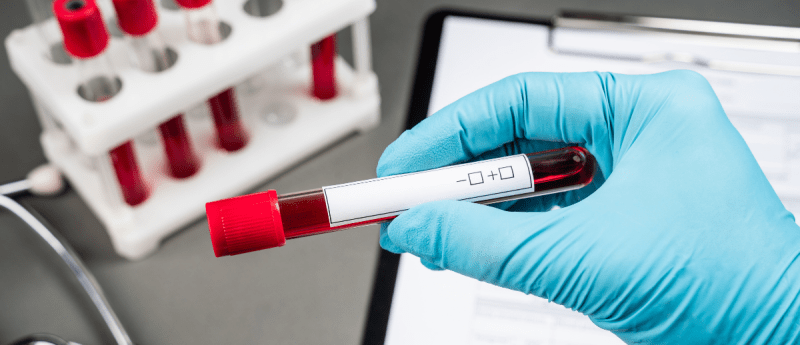Portable quantitative screening test for prostate-specific antigen at point-of-care

Recently published study presents the development of a highly portable quantitative screening test for prostate-specific antigen at point-of-care. We interviewed the first author to get insights on the background and potential implications of this new test.
Dr Balaji Srinivasan is currently a research associate in the Mehta Research Group, Division of Nutritional Sciences at Cornell University (NY, USA) and directs the research laboratory as part of the Institute for Nutritional Sciences, Global Health, and Technology. Dr Srinivasan is a mechanical engineer with expertise in micro- and nano- fabrication for development of microfluidic systems applied to organs-on-chips and point-of-care biosensors. His current work is on development of lateral flow assays for smartphone enabled detection of pathogens and various clinical, nutritional and food safety biomarkers. His previous research experience includes development of an impedance based portable microfluidic platform for detection of E. coli O157:H7 and avian influenza virus; development of microfluidic systems for in vitro tissue culture applied to drug toxicity testing.
1. What is the background of your work and what were the existing challenges that you aimed to address?
Dr Srinivasan: Prostate cancer (PCa) is the second most diagnosed cancer among men. Targeted PCa screening may decrease PCa‐specific mortality. Prostate‐specific antigen (PSA) is the most widely accepted tumor biomarker for screening and monitoring PCa status. However, in many settings, quantification of serum PSA requires access to centralized laboratories which, in addition to the cost, can be a major barrier for screening and monitoring in populations who may need it the most.
To overcome some of the above mentioned limitations, we have developed a point‐of‐care screening approach for total PSA (tPSA) quantification with the capability to quantify tPSA from a drop of serum or whole blood within a few minutes. The performance of tPSA quantification in serum with our point-of-care screening technology was comparable to performance of the laboratory standard IMMULITE®. Oncologists and urologists in clinical practice worldwide often depend on a serum tPSA quantification test to direct patient care for both initial PCa screening and for post‐treatment monitoring of patients. Our point‐of‐care test has the potential to significantly simplify and accelerate patient care by enabling serum tPSA test while the patient is still in the doctors’ office for the consultation or in the community.
2. How challenging was the work on the development and validation of the test? Were there some steps that proved to be especially difficult or unexpectedly easy?
Dr Srinivasan: One of the challenges in developing a lateral flow immunoassay is the process of screening commercially available antibodies for their performance in terms of target detection range and optimizing the various components of the test strip including selection of various membrane components, buffer compositions and sample volume. Initial validation was performed with commercially available serum based total PSA calibrator. Further validation involved testing with serum samples with known tPSA concentrations quantified by IMMULITE® analyzer as the gold standard. Differences in serum sample viscosities leads to different wicking speeds and causes varying incubation times for the molecules at the binding sites. Running buffer composition and volume can be further optimized to minimize these differences during validation with serum samples. The availability of numerous commercially available tPSA antibodies and commercial serum based calibrator for initial validation simplified our assay development. We were able to select an antibody pair that met our assay requirements after screening antibodies from three different sources.
3. What are the strengths of the newly developed test and are there some downsides of using it? How does it compare to other existing screening tests?
Dr Srinivasan: Our point‐of‐care approach for tPSA quantification has the capability to quantify tPSA from a drop of serum or whole blood within a few minutes and has the potential to make screening more accessible. This technology meets the WHO recommended ASSURED criteria as a benchmark to decide if tests address disease control needs: affordable, sensitive, specific, user-friendly, rapid and robust, equipment free and deliverable to end users. On a more technical side, the 150nm diameter gold nanoshell label reported in this study can be applied as an alternative to the widely used 40nm gold nanospheres for various other lateral flow assays to increase the colorimetric signal intensities without additional signal amplification steps and achieve lower detection limits. We compared the performance of our screening technology with laboratory standard IMMULITE® immunoassay analyzer and, on preliminary testing with archived serum samples, a correlation of 0.95 (p < .0001) was observed. Unlike other lab based tests, our approach doesn’t require sample to be cold chain transported to a centralized lab among other advantages. At present there are no FDA approved lateral flow test strips available in the US market for PCa screening based on serum total PSA quantification. At home PSA tests such as ‘PSA microTM’ from Pinnacle BioLabs (TN, USA) are available, but require collection of 3–4 drops of blood to be sent to the lab for processing. Recently, the FDA approved the Sangia Total PSA Test (OPKO Diagnostics), which includes a microfluidic cassette with Claros® 1 bench top analyzer diagnostic instrument system to quantify tPSA from a drop of blood. However, currently there is no information on OPKO’s website as to if and when this will be commercially available in the US.
4. What are your further work directions?
Dr Srinivasan: Our future work will involve conducting a comprehensive point-of-care tPSA testing in a community setting, by bringing healthcare directly into the community. This will help us to further optimize the performance of the tPSA point-of-care technology using freshly collected whole blood by fingerprick in human validation studies among greater number of participants, to improve the calibration curve and perform a comprehensive evaluation of diagnostic performance. The availability of a portable and affordable screening tool for PSA testing has the potential to enable tPSA screening outside of the healthcare system for those who are not getting tested regularly otherwise.
5. Considering the overall recent scientific and technological advances, what are your forecasts for future developments and applications in this area?
Dr Srinivasan: Technology has advanced rapidly with telemedicine, numerous point-of-care devices and wearable sensors increasingly becoming part of everyday life. These technological innovations can extend healthcare to remote locations and resource limited settings and also help people become more proactive in participating in their personal health management.
6. For our readers who are interested to learn more about the discussed topics – would you like to recommend some valuable sources for obtaining further information?
Dr Srinivasan:
- Nichols JH. Point-of-care testing. In: The Immunoassay Handbook (4th Edition). D. Wild (Ed.). Elsevier, Oxford, UK 455−463 (2013).
- Quinn AD, Dixon D, Meenan BJ. Barriers to hospital-based clinical adoption of point-of-care testing (POCT): A systematic narrative review. Crit. Rev. Clin. Lab. Sci. 53(1), 1−12 (2016).
- Litwin MS, Tan H-J. The diagnosis and treatment of prostate cancer: A review. JAMA, 317(24), 2532−2542 (2017).
- My Health: Upgraded: Revolutionary Technologies To Bring A Healthier Future. Bertalan Meskó (Ed.). Webinica Kft, Budapest, Hungary (2015).
- https://www.cancer.org/cancer/prostate-cancer.html

Interviewer:
Atanas G Atanasov, research leader focusing on molecular medicine and digital health, PI of LBI-DHPS, Editor-in-Chief of CRBIOTECH, and Executive Administrator of the open innovation platforms DHPSP and INPST.
